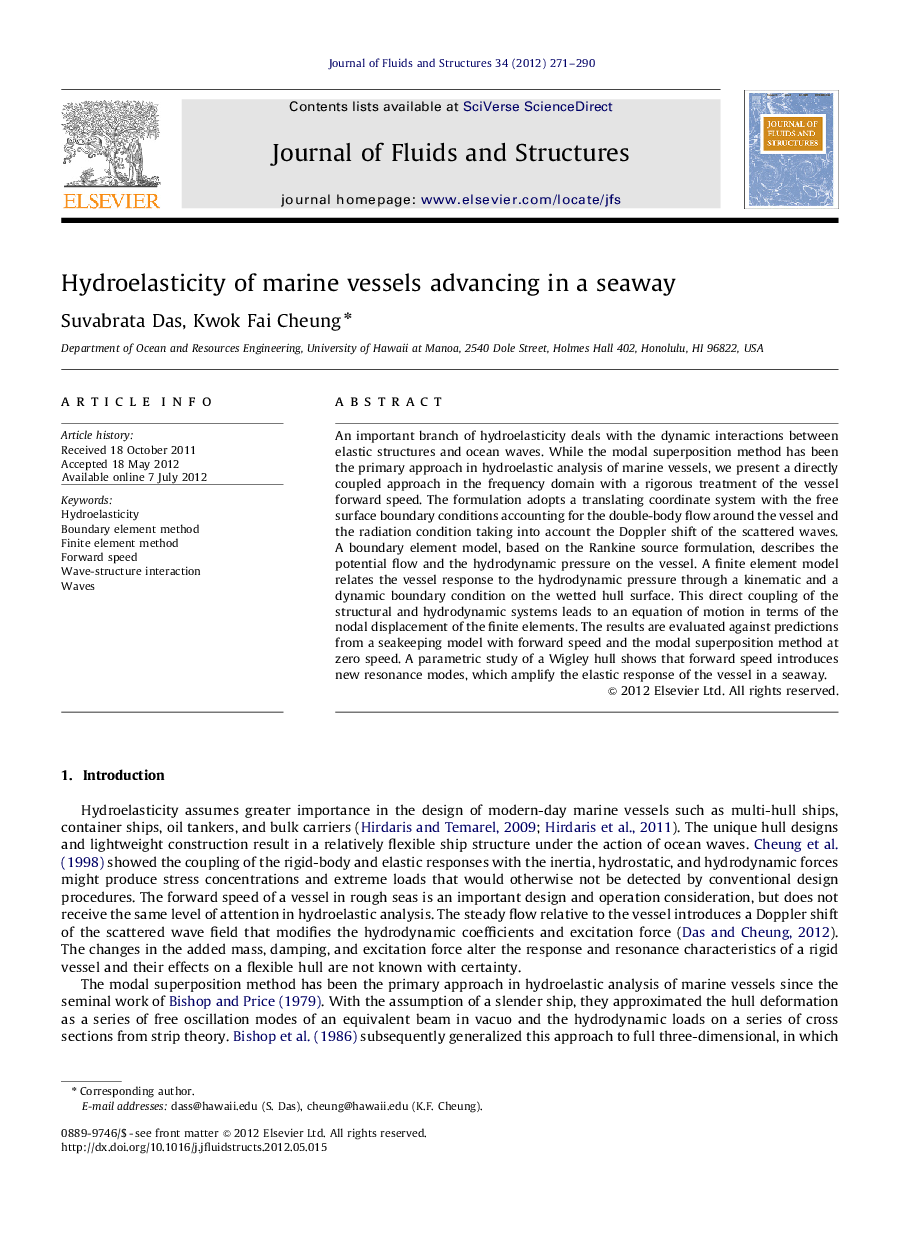| Article ID | Journal | Published Year | Pages | File Type |
|---|---|---|---|---|
| 789674 | Journal of Fluids and Structures | 2012 | 20 Pages |
An important branch of hydroelasticity deals with the dynamic interactions between elastic structures and ocean waves. While the modal superposition method has been the primary approach in hydroelastic analysis of marine vessels, we present a directly coupled approach in the frequency domain with a rigorous treatment of the vessel forward speed. The formulation adopts a translating coordinate system with the free surface boundary conditions accounting for the double-body flow around the vessel and the radiation condition taking into account the Doppler shift of the scattered waves. A boundary element model, based on the Rankine source formulation, describes the potential flow and the hydrodynamic pressure on the vessel. A finite element model relates the vessel response to the hydrodynamic pressure through a kinematic and a dynamic boundary condition on the wetted hull surface. This direct coupling of the structural and hydrodynamic systems leads to an equation of motion in terms of the nodal displacement of the finite elements. The results are evaluated against predictions from a seakeeping model with forward speed and the modal superposition method at zero speed. A parametric study of a Wigley hull shows that forward speed introduces new resonance modes, which amplify the elastic response of the vessel in a seaway.
► A directly coupled hydroelasticity model in the frequency-domain is presented. ► A boundary element model based on the Rankine source describes the potential fluid flow. ► A finite element model relates the hull motion to the hydrodynamic pressure. ► The coupled model compares well with the modal superposition method at zero speed. ► The forward speed introduces new resonance modes amplifying the elastic response.
